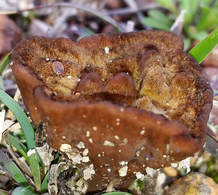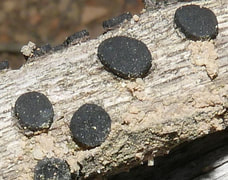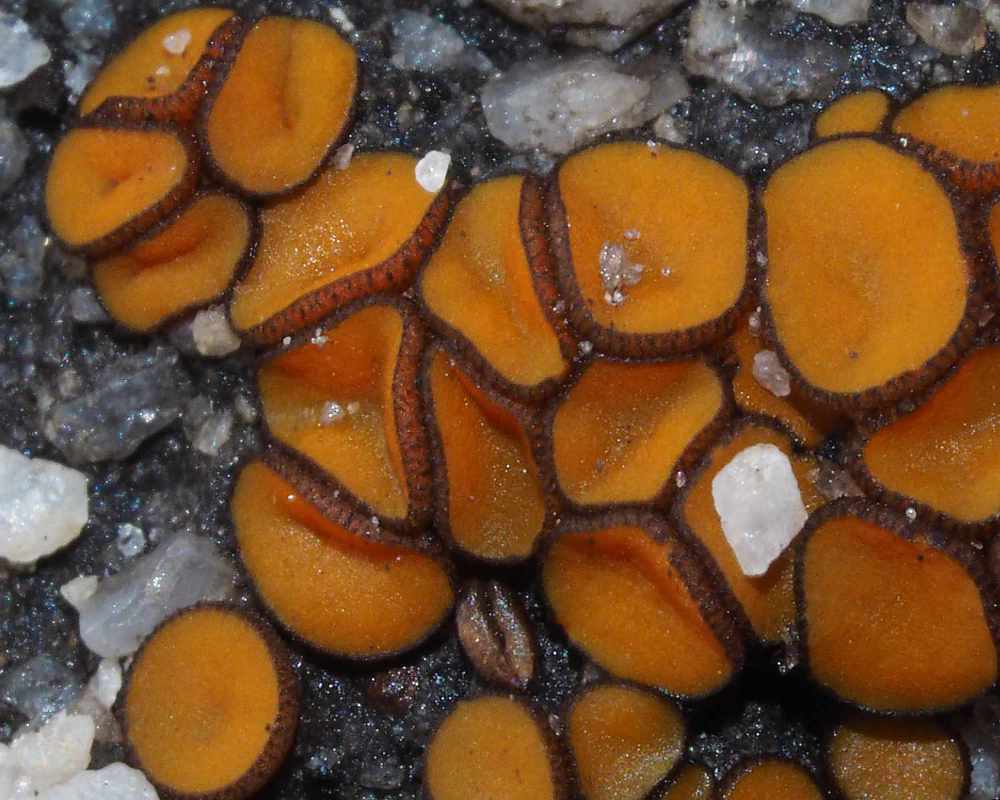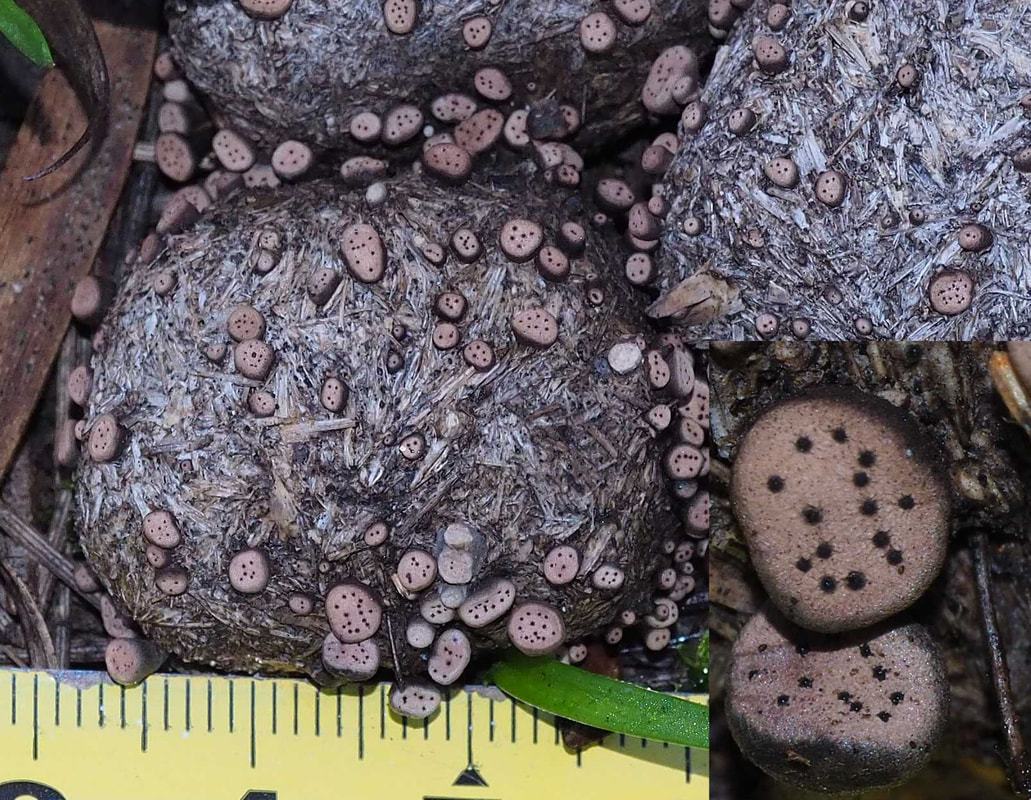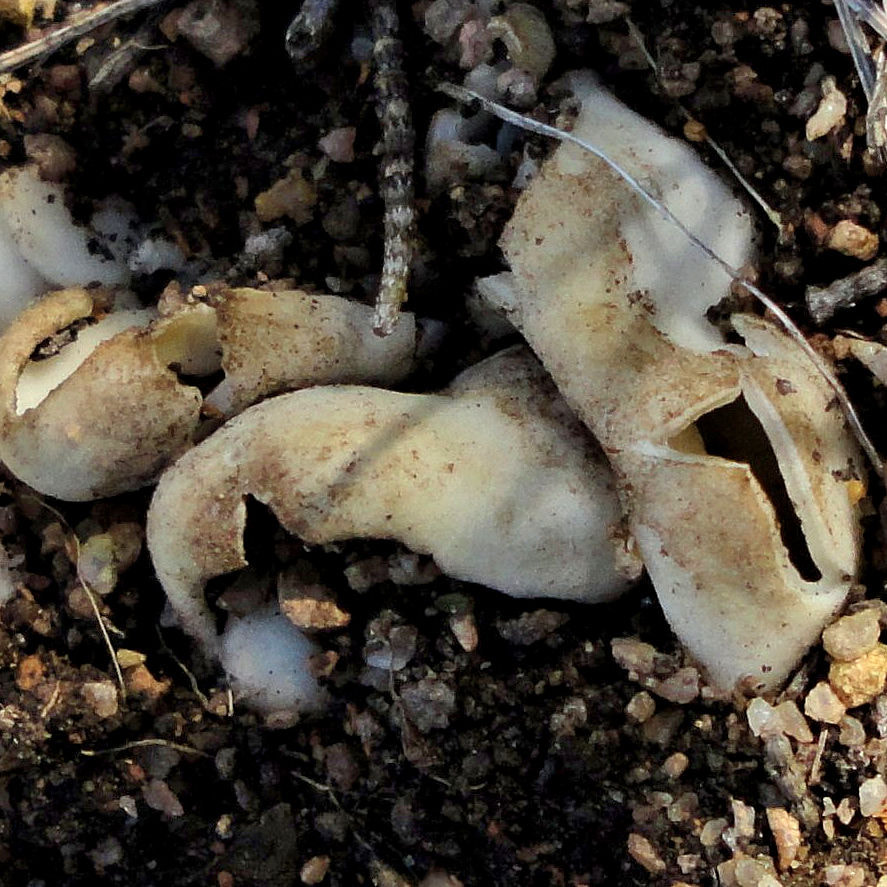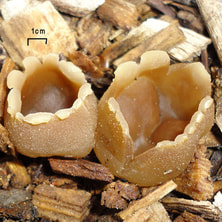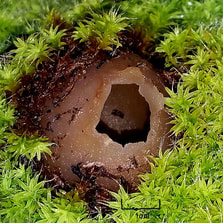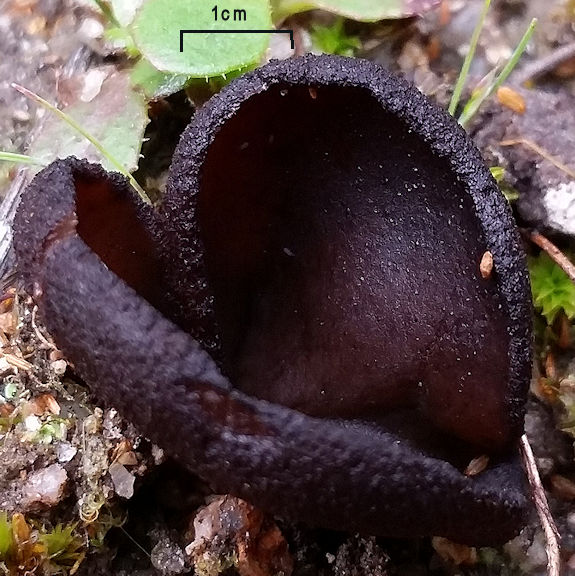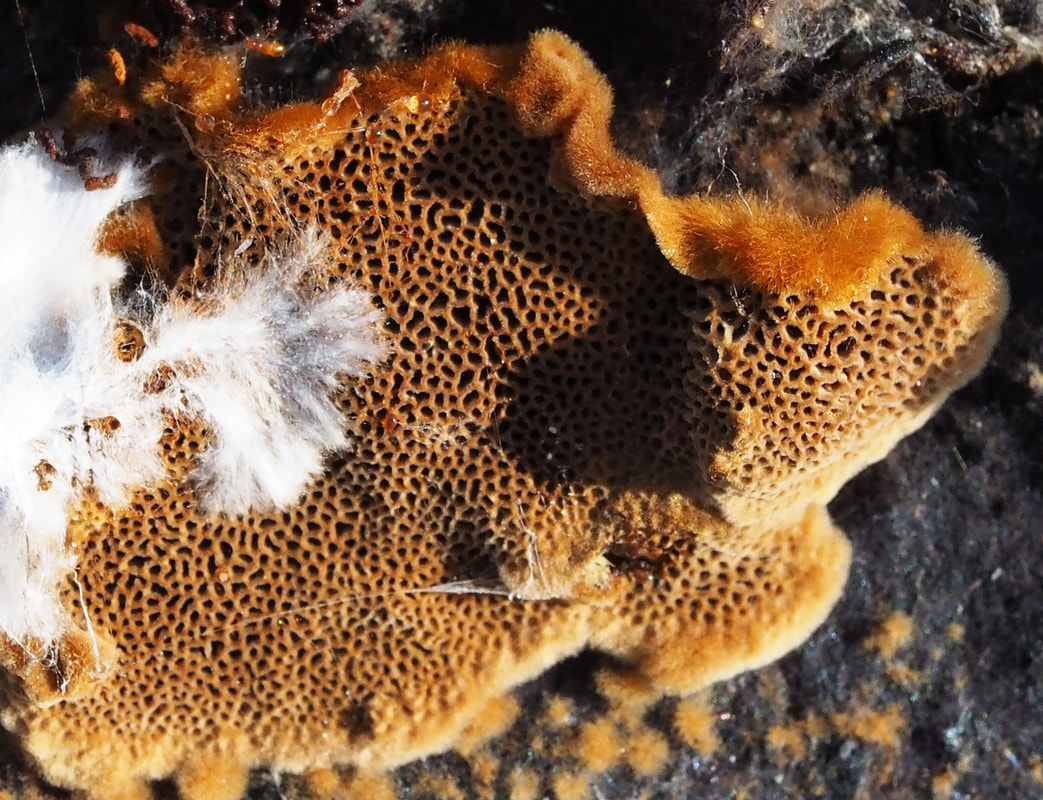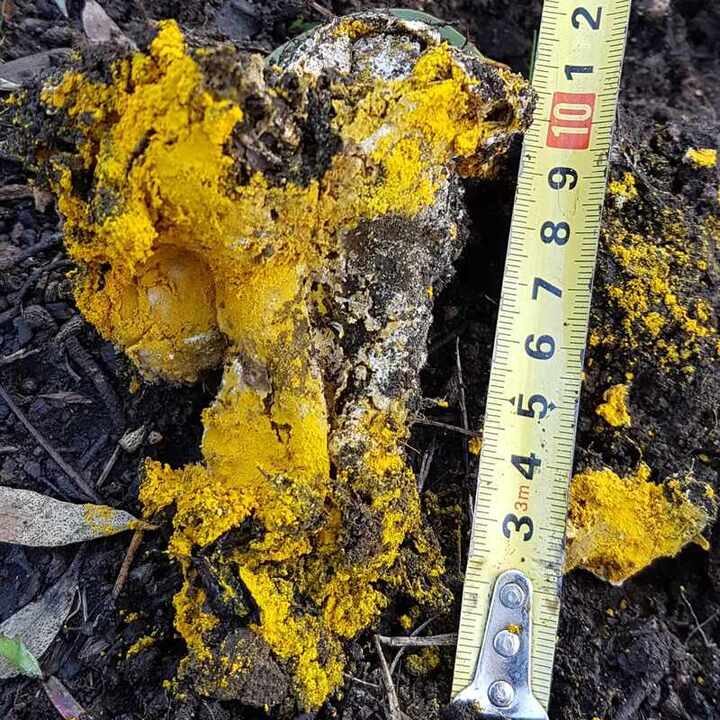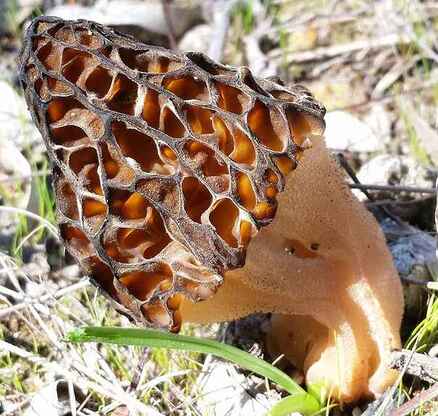Disc, Cup, Ear Fungi, and Lichens
Most large fungi you see are basidiomycetes, whereas cup and disc fungi and some truffles are Ascomycetes that have different types of spores.
Disc fungi form tiny disc-shaped and pebbly fruiting structures can be seen on dead wood and litter or as a component of lichens.
Click here for images and information on local lichens
Click here for images and information on local lichens
some ascomycetes eat other fungi
The yellow spores below are from a parasitic ascomycete Hypomyces chrysocephalus Bolete Destroyer at the Narrogin arboretum.
The Coltricia honeycomb type bracket fungi is being overcome by white hyphae and ginger fluffy growth of a Trichoderma ascomycete
The yellow spores below are from a parasitic ascomycete Hypomyces chrysocephalus Bolete Destroyer at the Narrogin arboretum.
The Coltricia honeycomb type bracket fungi is being overcome by white hyphae and ginger fluffy growth of a Trichoderma ascomycete
